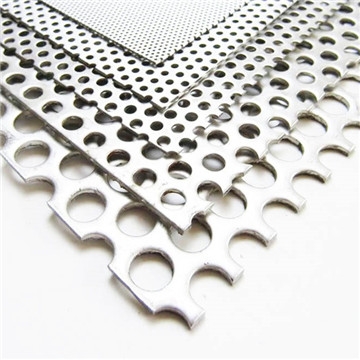Perforated metal is a versatile material widely used in various industries for applications such as filtration, ventilation, sound absorption, and decorative purposes. Here is a description of the typical processing steps involved in manufacturing perforated metal:
Material Selection: Choose the appropriate material for the perforated metal based on the application requirements. Common materials include stainless steel, carbon steel, aluminum, and various alloys. Consider factors such as corrosion resistance, strength, conductivity, and aesthetics.
Perforation Pattern Design: Determine the desired perforation pattern based on the application needs. This includes selecting the hole shape (round, square, slotted, etc.), hole size, spacing, and overall layout of the perforations. The pattern can be customized based on functional requirements or aesthetic considerations.
Perforation Process: Perforating the metal involves creating holes in the sheet or plate. There are several methods for perforation:
Punching: This is a common method where a punch and die set is used to mechanically punch the holes through the metal. The punch and die have shapes corresponding to the desired hole pattern.
Laser Cutting: Laser technology can be used to precisely cut holes in the metal. A high-powered laser beam is directed onto the metal surface, melting or vaporizing the material to create the holes.
CNC Milling or Drilling: Computer Numerical Control (CNC) machines equipped with milling or drilling tools can be used to create holes in the metal. The machine follows a programmed path to accurately mill or drill the desired hole pattern.
Deburring and Finishing: After perforation, the metal sheet may undergo deburring to remove any sharp edges or burrs left from the perforation process. This step improves safety and enhances the overall aesthetics of the perforated metal. Additionally, various finishing processes such as cleaning, polishing, or coating may be applied to achieve the desired surface appearance or corrosion resistance.
Inspection and Quality Control: The perforated metal is inspected to ensure it meets the required specifications. This includes visual inspections for any defects or irregularities in the hole pattern, measurements of hole size and spacing, and quality control checks to ensure the overall quality of the product.
Cutting and Shaping (Optional): Depending on the specific application, the perforated metal may be further cut or shaped to the required dimensions. This can include shearing the metal sheet into smaller sizes or bending it to achieve specific shapes or angles.
Packaging and Delivery: Once the perforated metal passes the quality control checks and any additional processing steps, it is properly packaged to protect it during transportation. The perforated metal sheets or components are then shipped to customers along with any necessary installation instructions or documentation.
